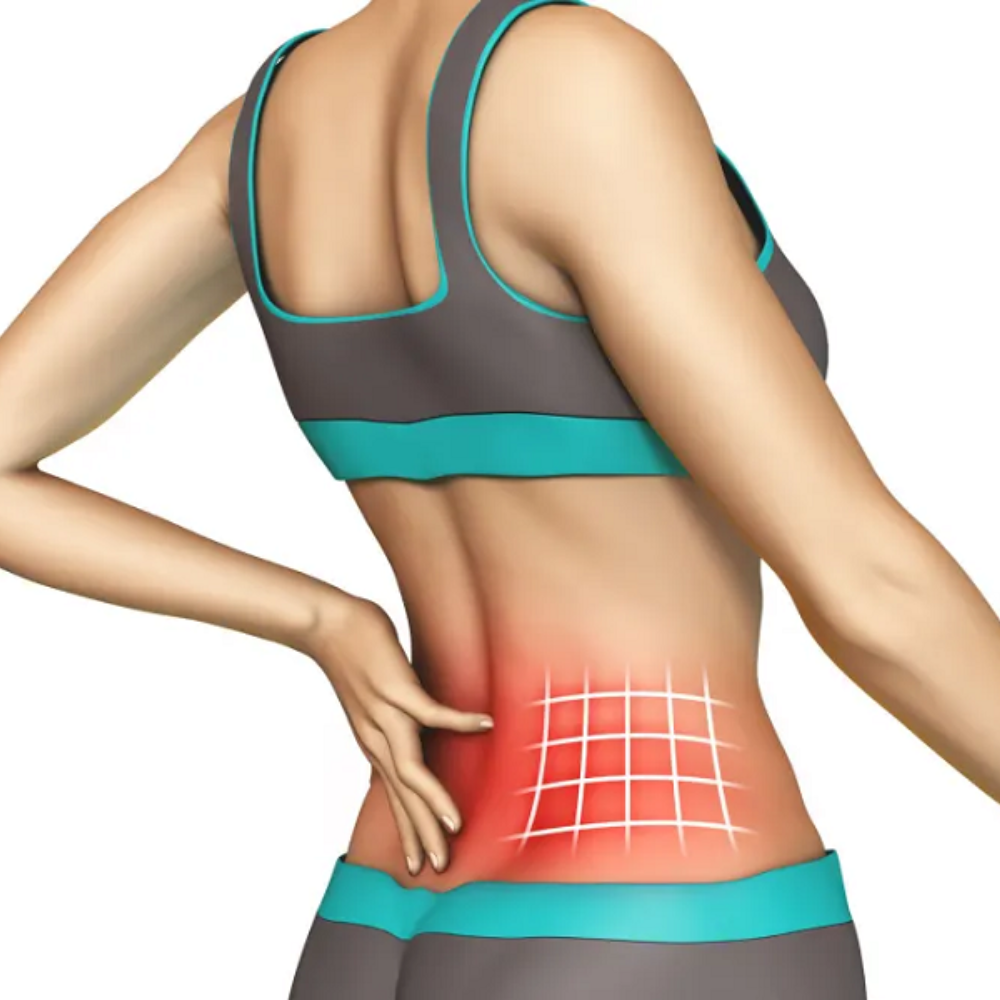Back pain is a common problem that affects millions of people worldwide. Whether it's caused by poor posture, repetitive movements, or a sedentary lifestyle, the discomfort and limited mobility associated with back pain can be debilitating. While there are many treatment options available, from medication to surgery, there are also simple and natural ways to alleviate back pain. In this article, we'll explore top fourteen simple techniques that can help relieve back pain and improve your quality of life. From stretching and strengthening exercises to massage therapy and acupuncture, we'll cover a range of methods that can help relieve pain and prevent future episodes. So, if you're tired of living with back pain, read on to discover fourteen ways to find relief and get back to feeling your best.
1. Lower Back Pain Relief Stretches
Regular stretching can help alleviate back pain by reducing tension and increasing flexibility in the muscles and joints of the back. It's important to stretch gently and not force any movements that cause pain. Some effective lower back pain relief stretches include the knee-to-chest stretch, the spinal twist, and the piriformis stretch. Read here for an article on The Top 10 Exercises To Relieve Back Pain.
2. Yoga For Back Pain
Yoga can be a helpful tool for reducing back pain by improving flexibility, strength, and posture. Specific yoga poses that can be beneficial for the back include the downward dog, the cat-cow stretch, and the child's pose. Engaging the practice of yoga for back pain relief regularly can also help reduce stress and tension in the body, which can contribute to back pain.
3. Strengthening Exercises
Strengthening exercises can help reduce back pain by building strength in the muscles of the back, abdomen, and legs. Some effective exercises for the back include the bird dog, the plank, and the bridge. It's important to start with light weights and progress slowly to avoid causing further strain or injury.
4. Massage Therapy
Massage therapy can be a helpful tool for reducing back pain by increasing circulation, reducing muscle tension, and promoting relaxation. Different massage techniques that can be beneficial for the back include Swedish massage, deep tissue massage, and trigger point therapy.
5. Acupuncture
Acupuncture involves the insertion of thin needles into specific points on the body to relieve pain and promote healing. Acupuncture for back pain can be helpful for reducing back pain by promoting circulation, reducing inflammation, and releasing natural painkillers in the body. During an acupuncture session, the practitioner may use additional techniques such as cupping or moxibustion to enhance the treatment.
6. Chiropractic Care
Chiropractic care involves the manipulation of the spine and other joints to promote healing and reduce pain. Different techniques used in chiropractic care for the back include spinal adjustment, traction, and mobilization. Chiropractic care can be helpful for reducing back pain by realigning the spine and improving joint mobility.
7. Heat Therapy
Heat therapy can be a helpful tool for reducing back pain by promoting circulation, relaxing muscles, and reducing stiffness. Different ways to apply heat therapy to the back include using a heating pad, taking a warm bath or shower, or using heat wraps or patches. It's important to use heat therapy safely and not apply too much heat, which can cause burns or further injury. Read this article to discover the difference between hot and cold compress and the benefits each brings.
8. Cold Therapy
Cold therapy, or cryotherapy, works by reducing inflammation and swelling in the affected area. It also helps to numb the area, providing temporary pain relief.
You can apply cold therapy by using a cold pack, ice pack, or even a bag of frozen vegetables. Wrap the cold pack in a towel and apply it to the affected area for 20 minutes at a time, several times a day. Be careful not to apply the cold pack directly to the skin, as this can cause ice burn.
9. Ergonomic Adjustments
Ergonomic adjustments involve making changes to your workspace or environment to reduce strain on your back. This can help to prevent back pain from occurring or worsening.
At work, adjust your chair so that your feet are flat on the ground and your knees are at a 90-degree angle. Keep your back straight and use a cushion or lumbar roll for extra support. At home, make sure your mattress is supportive and that your pillows are not too high or too low. When lifting heavy objects, lift with your legs, not your back.
10. Sleep Adjustments
Sleep is crucial for the body's healing and repair process. Making adjustments to your sleep habits can help to improve back pain by allowing the body to properly rest and recover.
Choose a mattress and pillow that provide proper support for your back. Sleep on your side with a pillow between your knees to align your spine. Avoid sleeping on your stomach, as this can cause strain on your back. Make sure to get enough sleep each night to allow the body to properly heal and recover.
11. Nutrition and Hydration
Proper nutrition and hydration are essential for maintaining a healthy back. Nutrients like calcium, magnesium, and vitamin D can help strengthen bones and muscles, while adequate hydration keeps spinal discs hydrated and cushioned.
Foods that are rich in calcium and magnesium include leafy greens, nuts, and dairy products. Vitamin D can be obtained from sunlight, fortified foods, and supplements. Staying hydrated by drinking plenty of water and avoiding sugary drinks is also crucial for maintaining spinal health.
12. Medications
There are several over-the-counter and prescription medications available to treat back pain. Nonsteroidal anti-inflammatory drugs (NSAIDs) like ibuprofen and naproxen can help reduce inflammation and pain. Acetaminophen is another common pain reliever that can be used for mild to moderate back pain.
For more severe pain, prescription medications like muscle relaxants, opioids, and nerve pain medications may be necessary. However, these medications come with potential side effects and should only be used under the guidance of a healthcare provider.
13. Surgery
In some cases, surgery may be necessary to alleviate back pain. Surgery is typically reserved for severe cases of back pain that have not improved with other treatments.
There are several types of surgeries used to treat back pain, including spinal fusion, laminectomy, and discectomy. These procedures are typically only considered after other treatments have been tried and have not been effective.
14. Prevention
Preventing back pain is always better than treating it. Maintaining a healthy weight, practicing good posture, and engaging in regular exercise can all help prevent back pain.
Additionally, making ergonomic adjustments at home and at work, getting a good night's sleep, and staying hydrated can all help keep the back healthy and pain-free.
Conclusion
In conclusion, back pain is a common issue that can be caused by a variety of factors. Fortunately, there are many simple ways to alleviate back pain, including stretching, yoga, massage therapy, acupuncture, chiropractic care, heat and cold therapy, ergonomic adjustments, sleep adjustments, nutrition and hydration, medications, and surgery.
If you are experiencing back pain, it is important to seek medical attention to determine the underlying cause and to develop an appropriate treatment plan. By taking steps to prevent back pain and by utilizing these simple strategies to alleviate pain, you can improve your quality of life and maintain a healthy, pain-free back.
OrthoRelieve carries a range of back braces that can help relieve back pain caused by various conditions, including sarcopenia. Check them out here:



